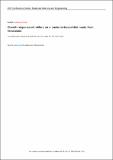| dc.description.abstract | Fishwastes are potential low-cost diet sources for replacing microalgae, which is the popular diet for rotifers. Growth responses of rotifer were tested under different weights of the diet (i.e. 0.05, 0.1, 0.2 and 0.4 g/L), different culture containers (i.e. using small tall (ST), small-short (SS), medium-tall (MT) and large-short (LS) containers), different initial densities of the rotifer (i.e. 10, 50 and 200 rotifers/mL) and mass cultured trials for 15 and 30 days. Population densities of rotifers increased significantly (ANOVA, p=0.001) when providing 0.1 to 0.4 gr/L than those fed 0.05 gr/L of the diet (Tukey HSD test, p<0.05). The densities also were significantly higher (ANOVA, p=0.001) when cultured using larger containers (LS and MT) than using smaller containers (ST, SS) (Tukey HSD test, p<0.05), but it was not significant when inoculated at different initial densities (ANOVA, p>0.05). The rotifers were successfully mass cultured for 30 days and were successfully harvested for 7 times at densities of about 2500 to 3300 ind./mL. | en_US |

